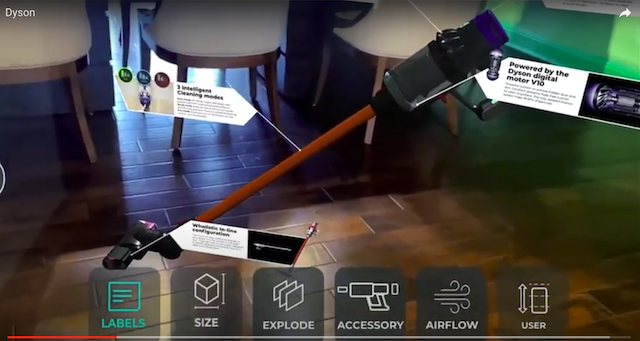Augmented reality (AR), the technology that superimposes digital information on a real-world environment, will change the way we shop for everything from laptops to furniture to shoes. Several companies have rolled out their own versions of AR shopping. Alibaba’s app Taobao Buy allows shoppers to interact with a select range of products online. Amazon’s AR view feature lets us see a product in our home before purchasing it. Both Target and Ikea have made use of AR so that consumers can try out furniture in their homes ahead of ordering it. Statista predicts the AR market will reach $198 billion in 2025, and the number of AR mobile users will reach 3.5 billion this year alone. But “try before you buy” isn’t the only application for AR in retail.
Store Mapping
Large warehouse spaces and shopping malls can use AR to direct both consumers and employees in 3D real-time. Directions are given step-by-step and superimposed over the actual space’s image through a smartphone camera. Consumers can find what they need and make purchases more quickly. And with the increased use of “buy online pick up in-store,” AR store mapping can increase employees’ efficiency in finding products to pull.
Virtual Fitting Rooms
Trying out products virtually before purchase isn’t limited to blenders and sofas. Both Target and Sephora are using AR to allow customers to test products such as makeup, glasses and shoes. This application works both in-store and from the comfort of the shopper’s home. The AR experience in-store is becoming even more compelling with the evolution of smart mirror technology. The virtual fitting room market, valued at $3.5 billion in 2021, is predicted to reach $12.97 billion by 2028. (Fortune Business Insights, 2021)
Product Exploration
So a potential buyer can see how that bedroom suite will look in their specific bedroom using AR technology just by pointing a smartphone’s camera at the space. But what about specs, opening the drawers of the nightstand, or weight capacities? AR overlays information directly onto the image. You can open drawers, look inside, see information about each individual piece. Exploring the capabilities and interiors of furniture, vehicles and appliances can all be done virtually, making both product investigation and, as a business, showcasing your own wares to clients easy and accessible from anywhere.
The bottom line with AR technology and shopping? It makes it easier and less expensive. If you can try a recliner in your space before you have it shipped to you, everyone saves on shipping costs, fossil fuels and labor. If you have step-by-step directions projected into your environment, you save time by not getting lost. Shopping experiences will change dramatically with the application of augmented reality. They already are.
Sources:
Aimagazine.com, mobidev.biz, fortunebusinessinsights.com, statista.com



